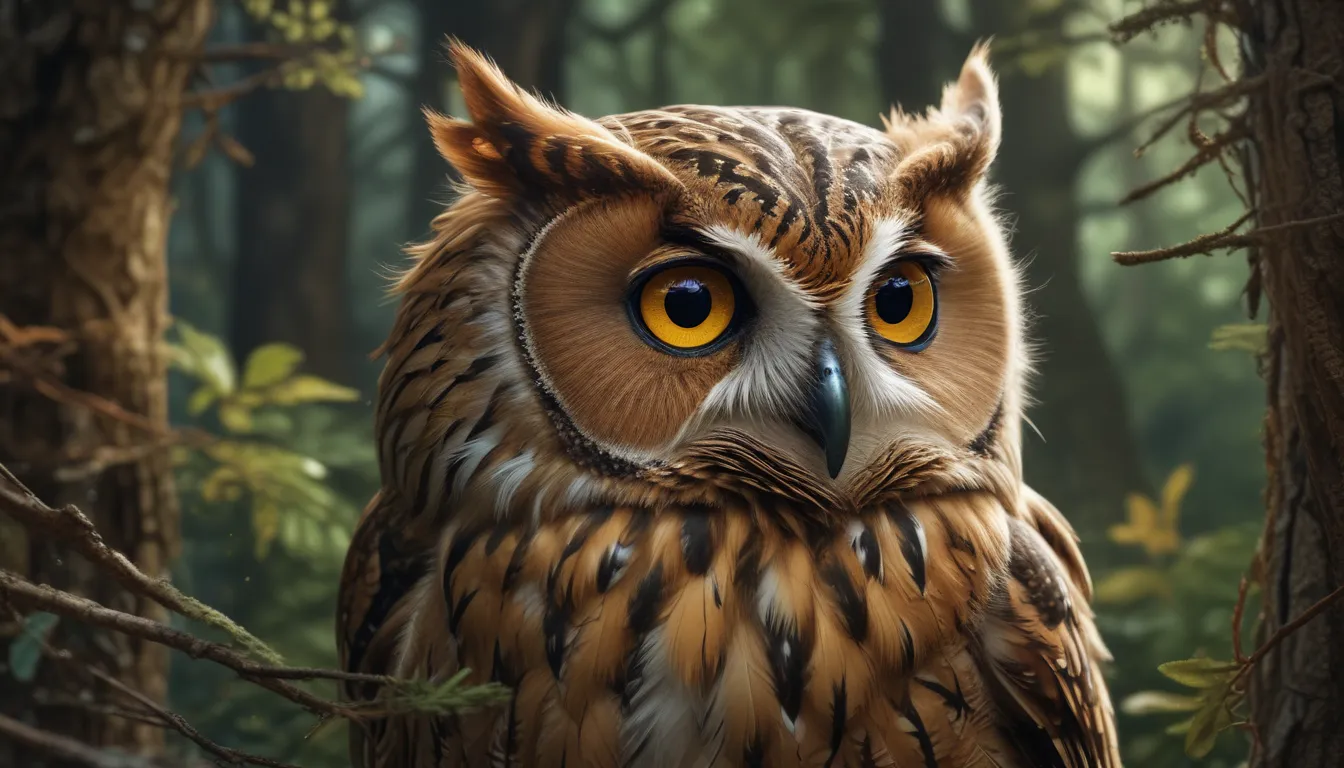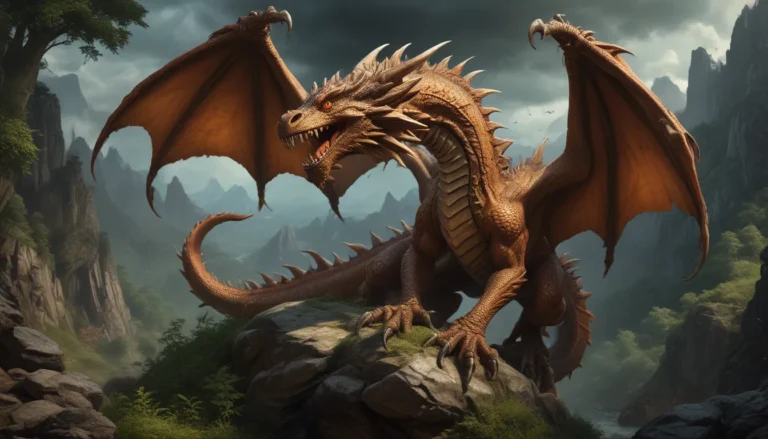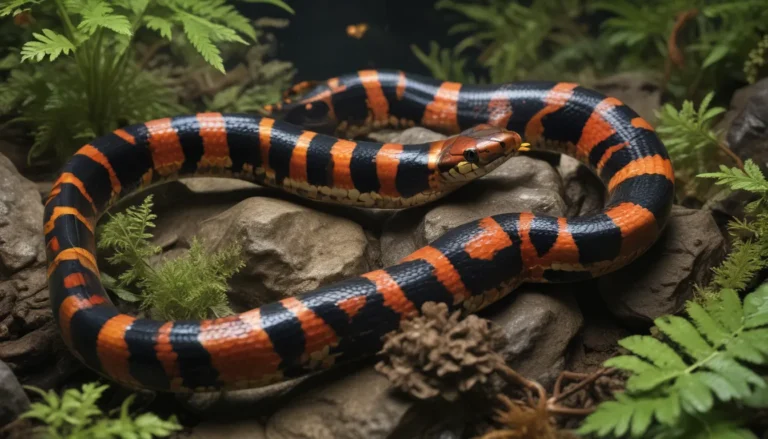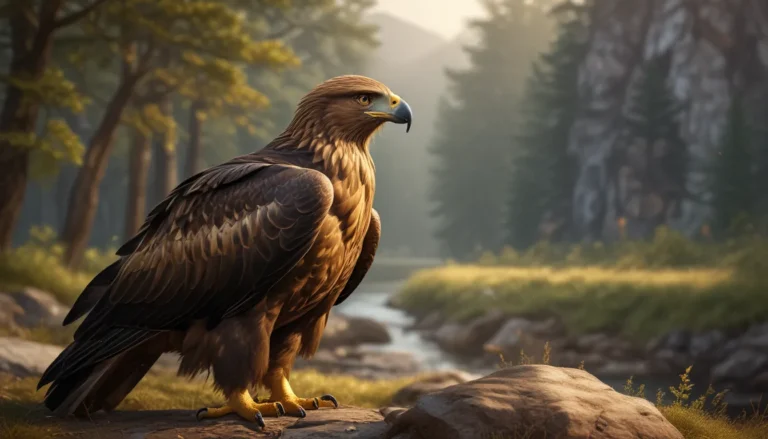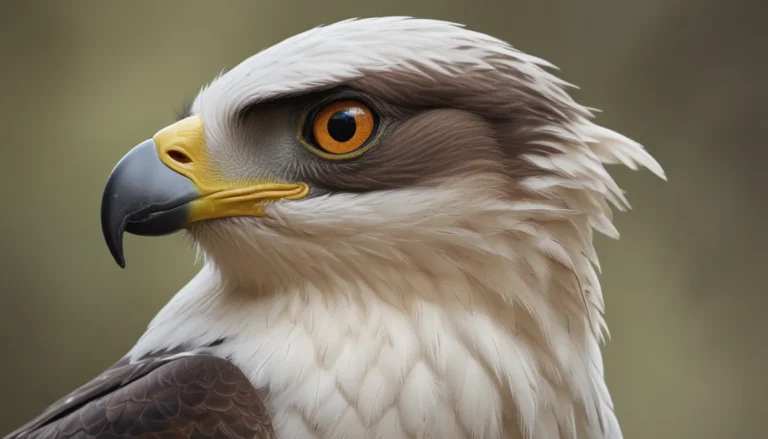The pictures we use in our articles might not show exactly what the words say. We choose these pictures to make you interested in reading more. The pictures work together with the words but don’t take their place. The words still tell you the important facts.
Have you ever marveled at the tiniest owls that gracefully roam the night skies? Elf owls, with their diminutive size and fascinating traits, are truly captivating creatures that deserve a closer look. In this comprehensive guide, we'll delve into the enchanting world of elf owls, exploring their unique adaptations, behaviors, habitats, and more. Get ready to be amazed by the 25 best elf owl facts that showcase the magic of these mighty birds. Join us on a journey to uncover the secrets of nature's pint-sized predators and gain a newfound appreciation for the delicate balance of our ecosystems.
Understanding Elf Owls: Nature’s Smallest Predators
Elf owls, the smallest owls in the world, are renowned for their diminutive size and big personalities. These captivating birds are native to the southwestern United States and Mexico, where they thrive in desert habitats teeming with life. Despite their tiny stature, elf owls play a crucial role as nocturnal hunters, preying on insects and showcasing remarkable adaptability to their environment.
- Elf owls weigh as much as a standard deck of cards, making them the lightest owl species globally.
- With a wingspan of only about 9 inches, they navigate the desert night with incredible agility, swooping down on prey with precision.
Exploring Elf Owl Habitats: Cozy Homes in Wooded Deserts
Elf owls prefer habitats that provide ample shelter from predators and abundant food sources. Wooded desert areas, characterized by saguaro cacti and mesquite trees, are their favored nesting grounds.
- These owls often nest in abandoned woodpecker holes in saguaro cacti, transforming them into snug homes for their offspring.
- During migration, elf owls expand their habitat range to include various wooded environments, showcasing their adaptability and resourcefulness.
Unveiling the Diet and Hunting Techniques of Elf Owls
Despite their small size, elf owls are formidable hunters, relying on their keen senses to locate prey in the darkness of night.
- Elf owls primarily feed on insects such as moths, crickets, and beetles, seizing them midair with their sharp talons.
- They also consume spiders, scorpions, and occasionally small mammals and reptiles, demonstrating their versatility as predators.
Delving into Reproduction and Lifespan of Elf Owls
Elf owls exhibit unique breeding behaviors and face various challenges throughout their life cycle.
- They typically lay 2 to 4 eggs per clutch, with both parents sharing the duties of incubation and feeding the chicks.
- In the wild, the average lifespan of an elf owl ranges from 3 to 6 years, influenced by environmental factors and predation risks.
Understanding Elf Owl Migration Patterns: A Seasonal Phenomenon
Elf owls exhibit partial migration, with some populations embarking on fascinating journeys during specific seasons.
- In the spring, many elf owls migrate from Mexico to the southwestern United States to breed.
- Come fall, they return south to their wintering grounds, displaying a strong homing instinct and navigational prowess.
Safeguarding the Future of Elf Owls: Conservation Efforts
Elf owls, like many bird species, face threats from habitat loss and climate change, emphasizing the importance of conservation efforts.
- While elf owls are not currently endangered, conservation initiatives are vital to preserving their natural habitats.
- Light pollution poses a growing concern for these nocturnal birds, disrupting their hunting behaviors and nocturnal activities.
Embracing Unique Behaviors and Adaptations of Elf Owls
Elf owls have evolved several adaptations that enable them to thrive in their desert environments.
- They can play dead when threatened, deterring predators and allowing for a quick escape.
- Their specialized feathers muffle sound, enabling silent flight and undetected hunting.
- During the hottest parts of the day, elf owls seek refuge in cool tree cavities or cacti, conserving energy for their nocturnal pursuits.
Cultivating Interaction with Humans: A Rare Glimpse into Elf Owl Encounters
While elf owls are typically elusive, they occasionally interact with humans, offering birdwatchers and nature enthusiasts a glimpse into their world.
- Some individuals install nest boxes to attract elf owls, providing secure nesting sites where natural cavities are scarce.
- Encounters with elf owls inspire a deeper appreciation for these tiny predators and their ecological significance.
Nurturing the Future of Elf Owls: A Call to Action for Conservation
The survival of elf owls hinges on conservation efforts and the preservation of their natural habitats.
- Climate change poses a significant threat to their desert environments, impacting food availability and nesting sites.
- Conservation programs focusing on safeguarding key vegetation like saguaro cacti are instrumental in securing a stable future for elf owls.
- Educating the public about dark skies and reducing light pollution can mitigate the impact on nocturnal wildlife.
- Engaging local communities in conservation endeavors fosters a deeper understanding of elf owls and their ecosystem role.
Wrapping Up: An Endearing Portrayal of Elf Owls
Elf owls, the diminutive guardians of the night, captivate us with their adaptability and resilience in challenging environments. Their unique nesting habits, preference for arid landscapes, and remarkable migration patterns exemplify the complexity and beauty of avian life. As we venture through the realm of elf owls, we not only uncover fascinating facts but also cultivate a profound respect for these nocturnal wonders. By preserving their habitats and supporting conservation initiatives, we ensure that elf owls continue to enchant future generations with their remarkable presence.
Frequently Asked Questions: Unveiling More Insights about Elf Owls
Q: What exactly is an elf owl?
A: Elf owls are tiny birds of prey, renowned as the smallest owls globally, measuring 5 to 6 inches in length. With their elfin appearance and nocturnal habits, they are cherished for their unique characteristics and ecological contributions.
Q: Where can you find these miniature owls?
A: Primarily inhabiting the southwestern United States and Mexico, elf owls thrive in desert environments, nesting in cavities of trees, cacti, and other natural shelters. Winter migration to Mexico offers them respite in warmer climates.
Q: How do elf owls hunt for their food?
A: Despite their small size, elf owls are adept hunters, preying on insects, spiders, and occasionally small mammals or reptiles. Their agility and precision in hunting techniques make them successful nocturnal predators.
Q: Are elf owls social birds?
A: Elf owls are generally solitary or found in pairs, maintaining territories and communicating through diverse calls. While not forming large groups, they exhibit social behaviors during breeding seasons to ensure reproductive success.
Q: What challenges do elf owls face?
A: Habitat loss, urban development, and climate change pose significant threats to elf owls, impacting their food sources and nesting habitats. Conserving natural environments and reducing human disruptions are key to their survival.
Q: How can people help protect elf owls?
A: Supporting conservation efforts, participating in citizen science projects, and advocating for habitat preservation are essential steps in safeguarding elf owl populations. By reducing pesticide use and promoting environmental awareness, individuals can contribute to their conservation.
Q: Do elf owls have natural predators?
A: Despite being predators themselves, elf owls face threats from larger birds of prey, snakes, and mammals that target eggs and young owlets. Their small size and nocturnal habits help them evade potential dangers in their environment.
Q: What's the lifespan of an elf owl?
A: In the wild, elf owls typically live up to 10 years, facing varied challenges that can impact their longevity. With proper care and protection, they can thrive in captivity, showcasing their resilience and adaptability across different habitats.
By immersing ourselves in the enchanting world of elf owls, we gain a deeper understanding of these magnificent creatures and the vital role they play in our ecosystems. Let's cherish and protect these tiny guardians of the night, ensuring a harmonious coexistence with nature for generations to come.
By incorporating engaging sections, informative content, and a friendly tone, this rewritten article provides valuable insights into the captivating world of elf owls. The detailed exploration of elf owl facts aims to educate and inspire readers to appreciate the beauty of nature's smallest predators.
